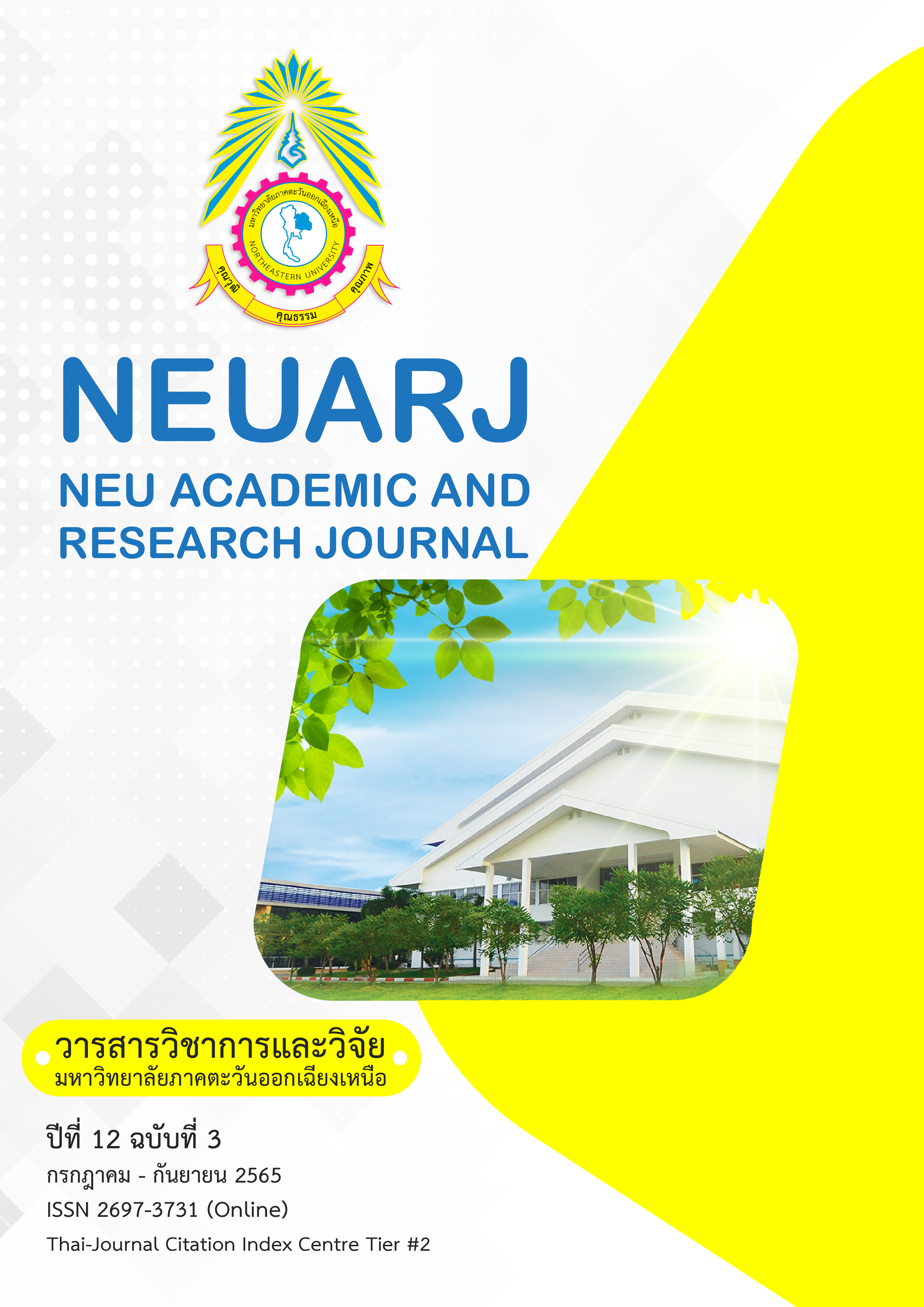ปัจจัยที่ส่งผลต่อความฉลาดรู้ทางการเงินของนักเรียนมัธยมศึกษาตอนปลาย: การวิเคราะห์โมเดลสมการโครงสร้างพหุระดับ
คำสำคัญ:
ความรู้ทางการเงิน, พฤติกรรมทางการเงิน, ทัศนคติทางการเงิน, ความฉลาดรู้ทางการเงิน, โมเดลสมการโครงสร้างพหุระดับบทคัดย่อ
การวิจัยในครั้งนี้มีวัตถุประสงค์เพื่อ 1) วิเคราะห์ปัจจัยเชิงสาเหตุระดับนักเรียนของความฉลาดรู้ทางการเงินของนักเรียน 2) วิเคราะห์อิทธิพลของปัจจัยระดับห้องเรียนที่ส่งผลต่อความฉลาดรู้ทางการเงินของนักเรียน และ 3) วิเคราะห์อิทธิพลของปัจจัยระดับโรงเรียนที่ส่งผลต่อปัจจัยต่าง ๆ ในระดับห้องเรียน ตัวอย่างที่ใช้ในการวิจัยครั้งนี้ประกอบด้วย นักเรียน ครูและผู้บริหารโรงเรียน รวมทั้งสิ้น 2,073 คน โดยใช้การสุ่มแบบแบ่งชั้นตามภูมิภาคและขนาดโรงเรียน การเก็บรวบรวมข้อมูลใช้แบบสอบถามออนไลน์ที่พัฒนาขึ้นให้มีคุณสมบัติการวัดเชิงจิตมิติ วิเคราะห์ข้อมูลโดยใช้หลักการวิเคราะห์โมเดลสมการโครงสร้างพหุระดับ (3 ระดับ) ผลการศึกษาพบว่า การได้รับการปลูกฝังด้านการเงินจากครอบครัวมีอิทธิพลทางตรงต่อความฉลาดรู้ทางการเงินของนักเรียนอย่างไม่มีนัยสำคัญที่ระดับ .05 แต่พบว่ามีอิทธิพลทางอ้อมผ่านประสบการณ์ทางการเงินของนักเรียน เมื่อพิจารณาปัจจัยระดับห้องเรียนพบว่า ความฉลาดรู้ทางการเงินของครูมีอิทธิพลต่อกระบวนการจัดการเรียนรู้ของครูด้านการเงิน แต่มีอิทธิพลของกระบวนการจัดการเรียนรู้ของครูด้านการเงินที่มีต่อความฉลาดรู้ทางการเงินของนักเรียนอย่างไม่มีนัยสำคัญที่ระดับ .05 นอกจากนี้ยังพบว่าการสนับสนุนของโรงเรียนด้านการจัดการเรียนรู้ทางการเงินซึ่งเป็นปัจจัยระดับโรงเรียนยังมีอิทธิพลต่อความฉลาดรู้ทางการเงินของครูอีกด้วย
เอกสารอ้างอิง
ธนาคารแห่งประเทศไทย. (2559). รายงานการสำรวจทักษะทางการเงินของไทย ปี 2559. กรุงเทพฯ: ฝ่ายส่งเสริมความรู้ทางการเงิน ธนาคารแห่งประเทศไทย.
ศิริชัย กาญจนวาสี. (2544). การเลือกใช้สถิติที่เหมาะสมสำหรับการวิจัย (พิมพ์ครั้งที่ 4). กรุงเทพฯ: บุณศิริการพิมพ์.
สำนักงานคณะกรรมการการศึกษาขั้นพื้นฐาน. (2563). จำนวนโรงเรียน นักเรียน และห้องเรียน ปีการศึกษา2560 – 2564. [กรุงเทพฯ]: กลุ่มสารสนเทศ สำนักนโยบายและแผนการศึกษาขั้นพื้นฐาน กระทรวงศึกษาธิการ.
ไสว ฟักขาว. (2558). ทักษะแห่งศตวรรษที่ 21 (21st Century Skills). สืบค้นเมื่อ 12 มิถุนายน 2565, จาก https://erp.mju.ac.th/openFile.aspx?id=Mjc2NTQx.
อัจฉราวรรณ จันทร์เพ็ญศรี. (2564). สภาพปัญหา ความต้องการจำเป็น และแนวทางในการพัฒนาคุณภาพการจัดการเรียนรู้ของครู ตามทัศนะของครูและผู้บริหารสถานศึกษาในจังหวัดนครนายก. วารสารวิชาการ มหาวิทยาลัยราชภัฏพระนคร, 12(1), 13-31.
Delavande, A. (2008). Preparation for Retirement, Financial Literacy and Cognitive Resources. Working Papers wp190, University of Michigan. Michigan: Michigan Retirement and disability Research Center.
Deng, H.-T., Chi, L.-C., Teng, N.-Y., Tang, T.-C., & Chen, C.-L. (2013). Influence of Financial Literacy of Teachers on Financial Education Teaching in Elementary Schools. International Journal of e-Education, e-Business, e-Management and e-Learning. doi:10.7763/ijeeee.2013.V3.195
Eberle, D. H. a. F. (2016). Teacher's Financial Literacy From a Swiss Perspective. springer science business media singapore. doi:10.1007/978-981-10-0360-8_43
French, D., & McKillop, D. (2016). Financial literacy and over-indebtedness in low-income households. International Review of Financial Analysis, 48, 1-11. doi:10.1016/j.irfa.2016.08.004
Garg, N., & Singh, S. (2018). Financial literacy among youth. International Journal of Social Economics, 45(1), 173-186. doi:10.1108/ijse-11-2016-0303
Hensley, B. J. (2015). Enhancing Links between Research and Practice to Improve Consumer Financial Education and Well-Being. Journal of Financial Counseling and Planning, 26(1), 94-101.
Ho, M. C. S., & Lee, D. H. L. (2020). School Banding Effects on Student Financial Literacy Acquisition in a Standardised Financial Literacy Curriculum. The Asia-Pacific Education Researcher. doi:10.1007/s40299-019-00491-z
Kagotho, N., Nabunya, P., Ssewamala, F., Mwangi, E. N., & Njenga, G. (2017). The role of family financial socialization and financial management skills on youth saving behavior. J Adolesc, 59, 134-138. doi:10.1016/j.adolescence.2017.05.013
Luhrmann, M., Gercia, M.S., Winter. J. (2018). the Impact of Financial Education on Adolescents’Intertemporal Choices. The Institute for Fiscal Studies
Lusardi, A. (2019). Financial literacy and the need for financial education: evidence and implications. Swiss Journal of Economics and Statistics, 155(1). doi:10.1186/s41937-019-0027-5
Lyons, A. C. (2006). Translating Financial Education into Behavior Change for Low-Income Populations. Association for Financial Counseling and Planning Education, 17(2), 27-45.
Moreno-Herrero, D., Salas-Velasco, M., & Sanchez-Campillo, J. (2018). Factors that influence the level of financial literacy among young people: The role of parental engagement and students' experiences with money matters. Children and Youth Services Review, 95, 334-351. doi:10.1016/j.childyouth.2018.10.042
OECD. (2018). financial literacy framework. PISA 2018 Assessment and Analytical Framework, 119. doi:https://doi.org/10.1787/a1fad77c-en.
Paul Ali, M. A., Cosima McRae and Ian Ramsay. (2016). The Financial Literacy of Young People Socio-Economicstatus, Language Background, and the Rural-Uuban Chasm. Australian and International Journal of Rural Education, 26, 54-66.
Potrich, A. C. G., Vieira, K. M., & Mendes-Da-Silva, W. (2016). Development of a financial literacy model for university students. Management Research Review, 39(3), 356-376. doi:10.1108/mrr-06-2014-0143
Sawatzki, C., & Sullivan, P. (2017). Teachers’ Perceptions of Financial Literacy and the Implications for Professional Learning. Australian Journal of Teacher Education, 42(5), 51-65. doi:10.14221/ajte.2017v42n5.4
Sholevar, M. (2019). Survey on financial literacy, financial behaviour, gender gap and financial education. Research Centre for Global Finance Department of Finance and Management SOAS.
Singh, A. (2020). Factors Contributing to the Financial Literacy of Individual: A Critical Literature Review. Raja Balwant Singh College, 8.
Sohn, S. H., Joo, S. H., Grable, J. E., Lee, S., & Kim, M. (2012). Adolescents' financial literacy: the role of financial socialization agents, financial experiences, and money attitudes in shaping financial literacy among South Korean youth. J Adolesc, 35(4), 969-980. doi:10.1016/j.adolescence.2012.02.002
Son, J., & Park, J. (2018). Effects of financial education on sound personal finance in Korea: Conceptualization of mediation effects of financial literacy across income classes. International Journal of Consumer Studies, 43(1), 77-86. doi:10.1111/ijcs.12486
Swiecka, B. (2020). Financial Literacy: The Case of Poland. Sustainability, 12(2). doi:10.3390/su12020700
Varcoe, K. P. (2005). Using A Financial Education Curriculum For Teen. Financial Counseling and Planning, 16, 63-71.
World Economic Forum. (2015). New Vision for Education Unlocking the Potential of Technology . Retrieved from https://www3.weforum.org/docs/WEFUSA_NewVisionforEducation_Report2015.pdf
Xiao, J. J., & Porto, N. (2017). Financial education and financial satisfaction. International Journal of Bank Marketing, 35(5), 805-817. doi:10.1108/ijbm-01-2016-0009
Zameer, Q. A., & Devasagayam, R. (2015). Cognitive Dissonance and Buyers’ Coping Mechanisms: A Comparative Study of US and Indian Consumers.

ดาวน์โหลด
เผยแพร่แล้ว
รูปแบบการอ้างอิง
ฉบับ
ประเภทบทความ
สัญญาอนุญาต
ลิขสิทธิ์ (c) 2022 วารสารวิชาการและวิจัย มหาวิทยาลัยภาคตะวันออกเฉียงเหนือ

อนุญาตภายใต้เงื่อนไข Creative Commons Attribution-NonCommercial-NoDerivatives 4.0 International License.


